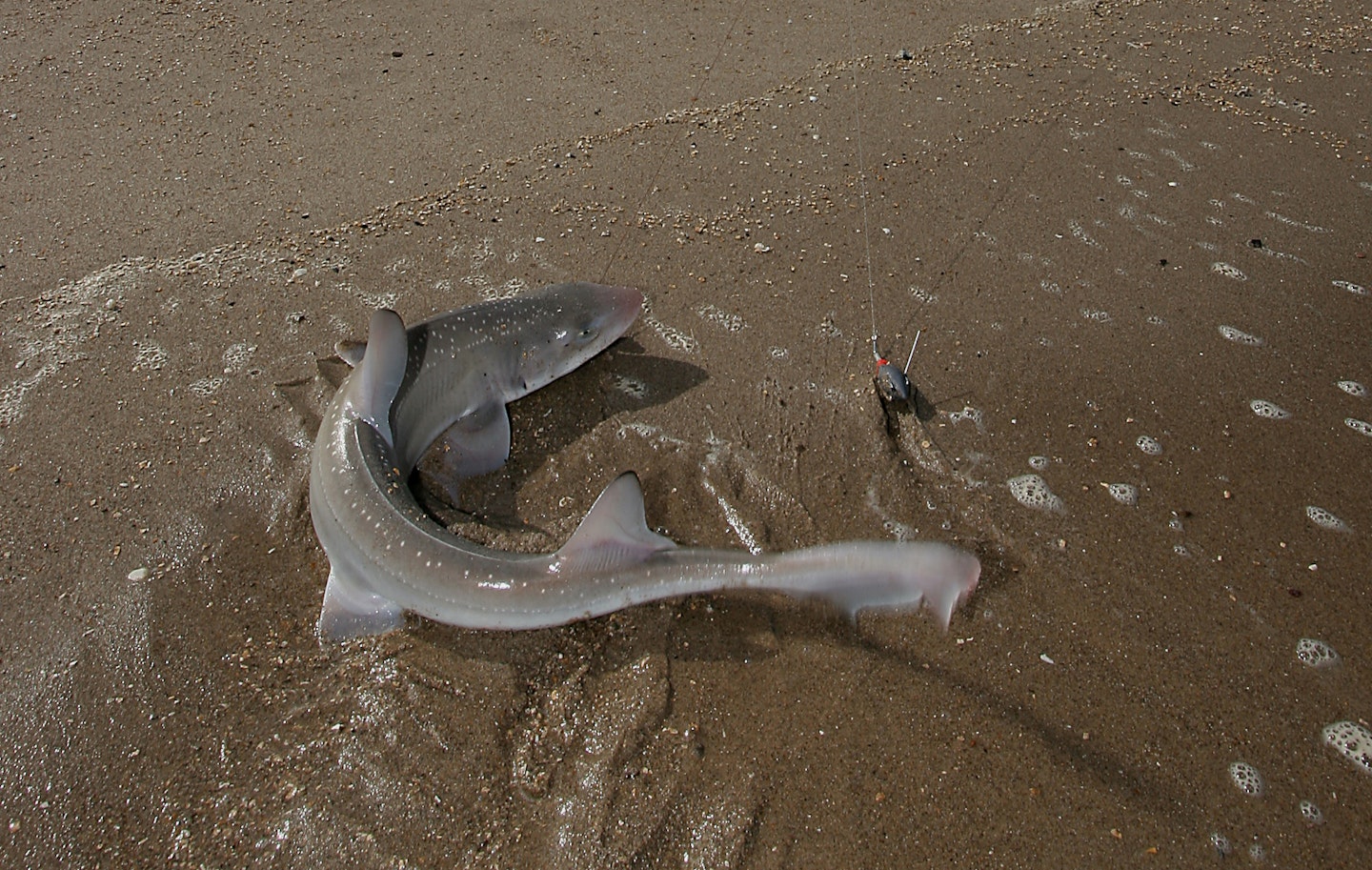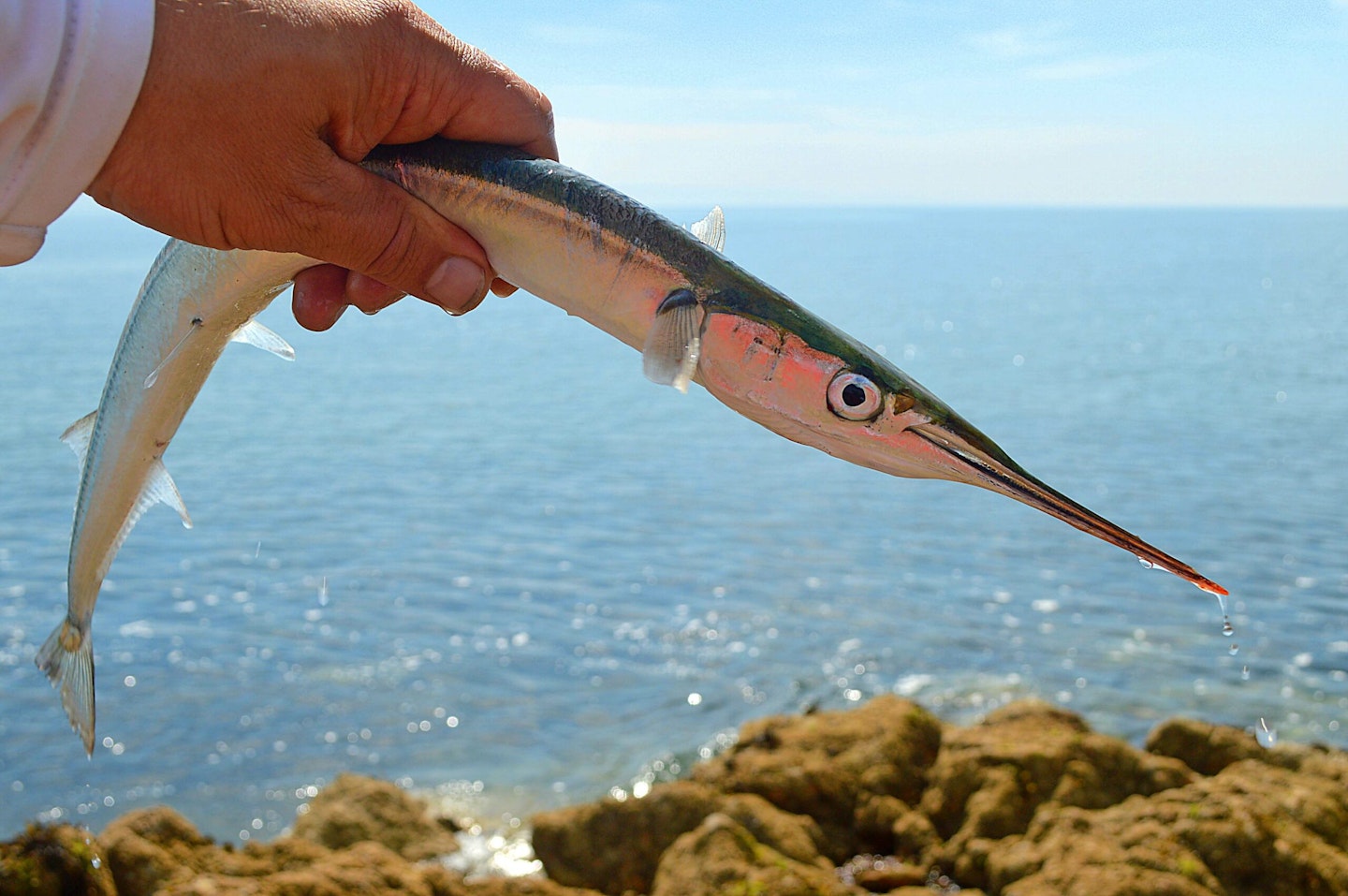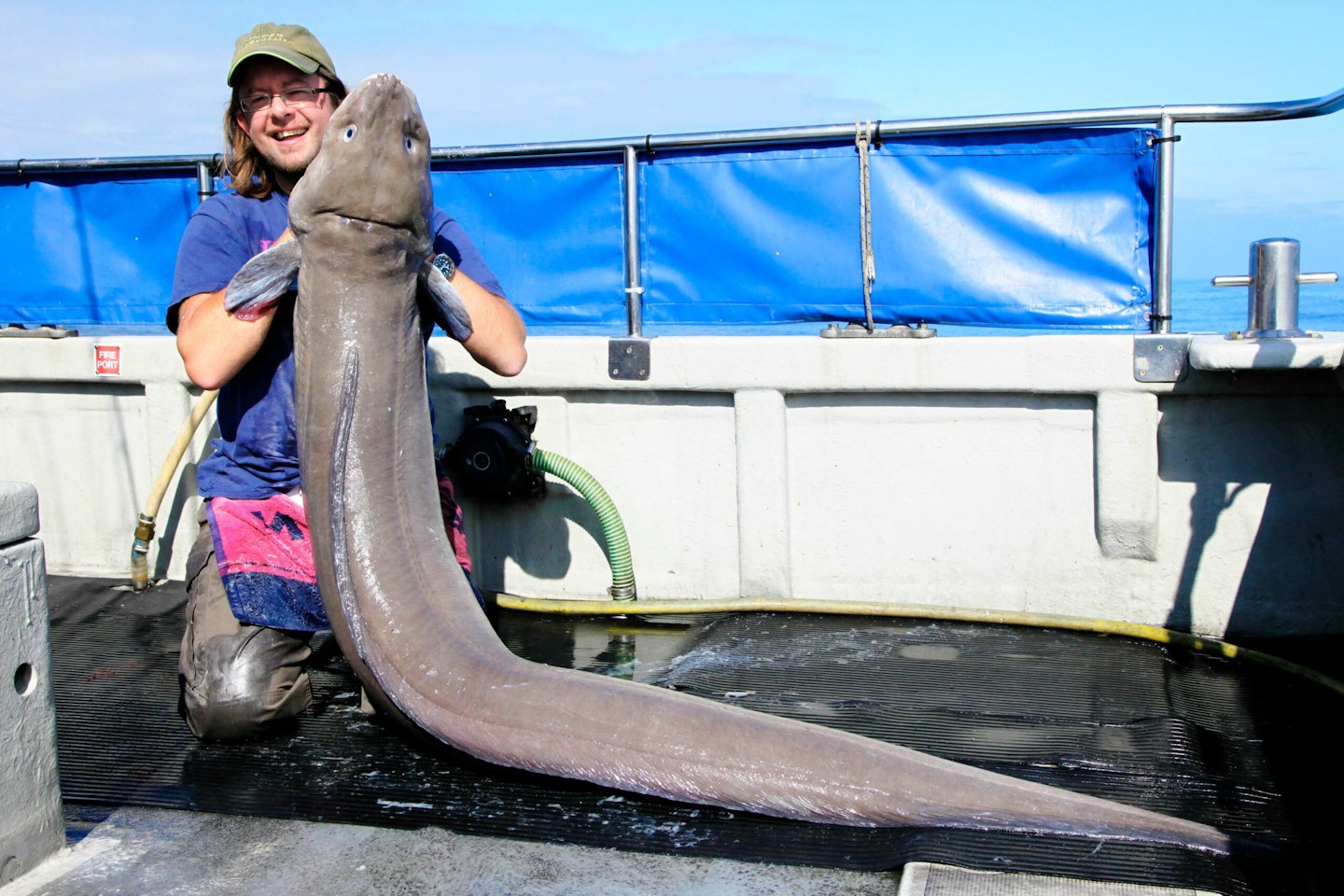With record numbers of Brits holidaying at home, in this article we look at some of the species anglers who manage to sneak a rod into the car might encounter on a trip to the seaside.
Sea fishing in the UK is fantastic fun and available to everyone, with no need to spend a fortune on bait and tackle. Here's what you could catch on a visit to the beach...
GET THE BEST TIPS FOR SEA FISHING IN THIS EXPER TIPS & TACTICS ARTICLE.
Mackerel
Mackerel feed in the mid to upper layers and this extremely fast-swimming fish (the quickest of all our native species) is numerous around British shores all summer. August is THE
best month for targeting them, and if you catch one the chances are that you’ll catch a bucketful. Likely to turn up anywhere too, from harbours and breakwaters, to rocky outcrops and beaches with deep water close in.
Chances of catching: 8/10
Best baits: Live sandeels, floatfished strips of herring or sprat. Can also be caught on lures, spinners and feathers.

Smoothhound
A member of the shark family, the smoothound and its close relative the starry smoothhound can be caught inshore all summer long along southern and south-eastern shores, where they tend to roam mid-water in small shoals along favoured patrol routes. They feed over a wide range of seabed types, and come in surprisingly close. They are sometimes known for playing with their food before swallowing it properly,so if you’re getting strange bites and striking into nothing, a ‘smoothie’ could well be to blame!
Chances of catching: 3/10
Best baits: Legered fish strips/squid, crabs, ragworm and shellfish

Pollack
Although found to much larger sizes in the deep ocean later in the year, from May to October pollack thrive in our inshore waters and can be caught on the simplest of tactics and from all sorts of marks, but especially reefs, rocky sections of coastline and harbour walls, especially those with plenty of seaweed cover. Will just as willingly take a fish bait as they will a spinner or lure.
Chances of catching: 7/10
Best baits: Rubber sandeels, spoons, pirks, fish strips, worms and shellfish
FIND THE BEST SEA FISHING SPOTS NEAR YOU IN THIS WHERE TO FISH GUIDE.

Ballan wrasse
Pound-for-pound, there can’t be a harder fighting fish in the sea, and if you hook one of these on light gear your tackle – and your arm – is in for a proper workout! They can be caught on all manner of baits and tactics, including easily-gathered rockpool favourites such as limpets and mussels. Wrasse can save the day when other species refuse to play ball. Look to target the base of inshore rocks, reefs and harbour walls with plenty of seaweed cover close-by. Our other species of wrasse, the extravagantly-coloured cuckoo wrasse, is smaller and less common.
Chances of catching: 7/10
Best baits: Small pieces of fish such as herring or mackerel, squid, ragworms, small shellfish, prawns, light lures, fish/crab/shellfish baits

Thick-lipped grey mullet
There are three main species of mullet around our shores, the most plentiful of which is the thick-lipped variety. They are present all year-round, and can often be found in large groups in harbours and estuaries, at both high and low tide. They are common visitors to sandy bays, coves, creeks and piers, and feed at all levels in the water column, even in very shallow water. A great eating fish too, if you’re lucky enough to catch one!
Chances of catching: 6/10
Best baits: Mepps spinners, small ragworms, mackerel strips, peeled prawns, maggots, bread and sweetcorn

Cod
This chip shop favourite is typically an autumn visitor to southern shores, but can be caught from northern beaches and shore marks as early as June. It’s a fish with extremely catholic tastes – meaning it can be caught on just about any type of bait! Smaller examples are known as codling, and these feature far more in shore catches than their huge deep-water brethren. Can be caught over all sorts of seabeds, but favour rocky outcrops, reefs and inshore wrecks.
Chances of catching: 4/10
Best baits: Rag/lugworm, peeler crab, squid, sandeels, fish strips/fillets, pirks/lures

Bass
At their most plentiful between May and October, bass tend to favour turbulent waters along rocky or pebbly shorelines. They also feed in fast currents on sandy shores, and sometimes make their way into estuaries, marinas, harbours and even the tidal sections of freshwater coastal rivers. Days
with big onshore winds can be particularly productive, and bass will also feed well at night.
Chances of catching: 5/10
Best baits: Legered whole small fish, fish strips, squid, rag/lug worm, crabs, artificial lures
GET THE BEST LURES FOR BASS FISHING BY CHECKING OUT THIS BUYER'S GUIDE.

Garfish
Also sometimes known as needlefish, garfish are particularly plentiful around southern shores in summer, and look like a cross between a swordfish and an eel. They are willing inshore feeders in the upper water layers right through to the end of the summer, and put up a great scrap on
a light carp or sturdy coarse tackle. Target harbour walls, jetties and rocky marks.
Chances of catching: 8/10
Best baits: Floatfished mackerel strips, small fish, worms, prawns

Plaice
This familiar favourite is a real inshore specialist between spring and the end of autumn, where it tends to favour clear seabed areas, whether sand, shingle or estuarine mud. They come
in surprisingly close, and prefer relatively shallow areas of around 30ft and under. The plaice is often confused with the smaller flounder, but they’re easily told apart as the former has a ridge of bony bumps along the back of its head. One of the best easting fish in the ocean, if you’re lucky enough to catch one.
Chances of catching: 5/10
Best baits: Rag and lugworm, mussels, shrimps, crabs

Conger eel
No summary of our native shore species would be complete without the mighty conger eel, the largest species of eel in the world. Although more commonly found around offshore wrecks, in summer huge conger eels can be found close to the shore in rocky outcrops, crevices, the base of harbour walls and underneath piers. They are mainly nocturnal, but if you hook one – even a small one – you’ll struggle to land without a mega strong set-up!
Chances of catching: 2/10
Best baits: Freshly-killed whole fish such as mackerel, pilchard or herring; squid/whole crab

_This page is a free example of the amazing content Angling Times Members get every single week. Becoming an Angling Times Member gives you access to award-winning magazine content, member rewards, our back issue archives, bonus content and more! Join our fishing community and find out more today!
_
